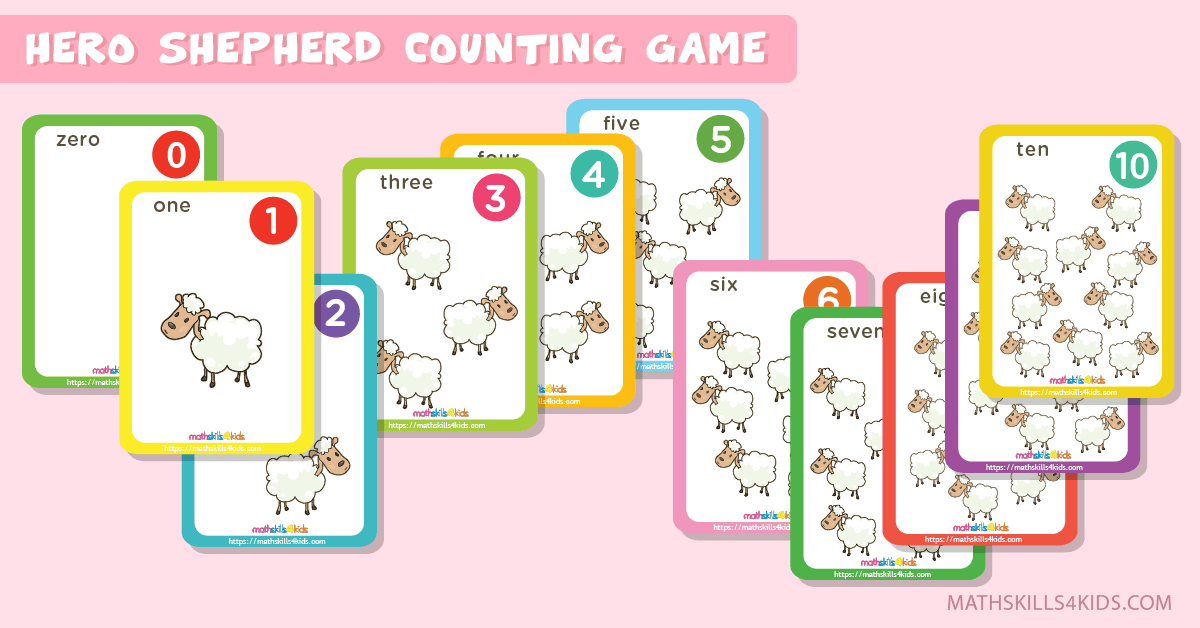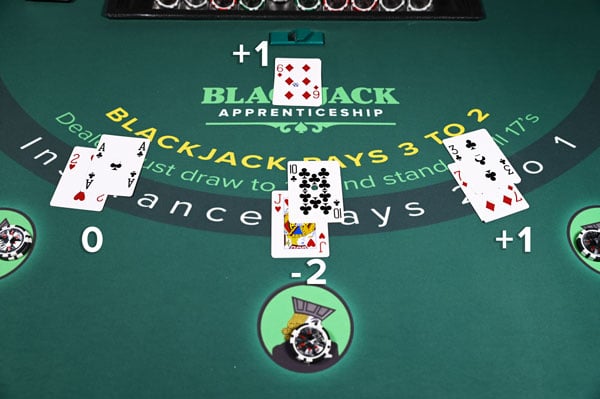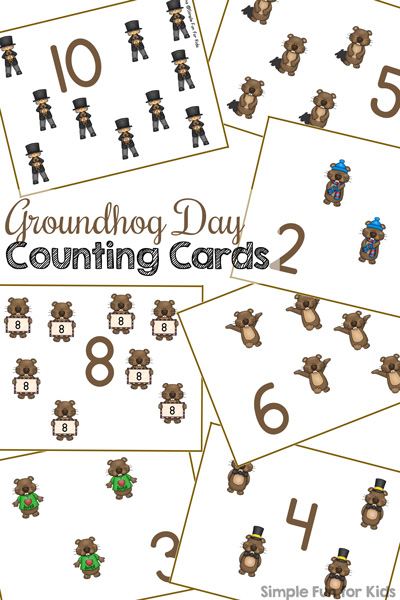Counting Cards 1
The flashcards are 3 x 5″. On one side are sheep to count. Flip them over and you will see the number, number word, and the number of sheep you just counted. These can be used for practice drilling, as mats to count sheep / pom poms / etc, or to take on a number scavenger hunt. Number Wall Cards. These are larger 5 x 8″ cards that are one. Filed Under: Math, Counting Tagged With: counting, kindergarten, clip cards, Pre-K You May Also Enjoy These Posts: Graphing activities for kindergarten The best order for teaching multiplication facts Hot chocolate counting mats #1-20. Card counters assign point values to each card that are different from the values I just explained. For card counters, there are point values beyond the obvious ones on the cards themselves. In card counting, cards 2-6 are worth +1, cards 7-9 are worth 0, and 10s, face cards, and Aces are worth -1.
- BMAG Counting Bears with Matching Sorting Cups,Number Color Recognition STEM Educational Toy for Toddler, Pre-School Learning Toy with 90 Bears,2 Tweezers,11 Activity Cards,1 Storage Box.
- Assign a tag of (+1) to every 2- 6 ranked cards and a tag of (–1) to every 10-A. Start your count after the shuffle and add the tags to each card that is pulled from the deck. When the running count is positive after any round, the undealt cards are richer in large cards.
Teach preschoolers all about numbers and build their confidence too!

Learning to count, mastering 1:1 correspondence (counting one number for each object), and number recognition doesn’t always come easily to young learners. Using activities to build confidence can set preschoolers up for success instead of frustration. In my own classroom, we have used our watermelon counting cards and our butterfly count and clip cards while teaching counting to go along with our themed learning.
The free printable Trace & Count Number Cards in this post can be used in a variety of ways at home or in the classroom setting! I find that many printable resources can be adapted to meet your child’s individual needs – this one included.
Counting Cards Video
This set of printable number cards can easily become a busy bag to use at home. Fill the bag with the number cards and a fun set of objects for your child to use along with them. This will become an independent learning center in my classroom. The counting objects will change as our themes change throughout the year!
Related posts:
Counting Cards 100 To 200
- Appendices
- Miscellaneous
- External Links
Introduction
Let me say loud and clear that card counting is hard and is not as rewarding as television and the movies make it out to be. If it were an easy way to make money, then everyone would be doing it.
Counting Cards 1-100
If you do not know the basic strategy, trying to count cards is highly ill-advised. Experienced card counters still play by the basic strategy the great majority of the time.There can be no short cut around learning the basic strategy, those who attempt card counting without a firm foundation in the basic strategy are making a big mistake.
To be a successful counter you have to be able to countdown a deck fast and memorize large tables of numbers as well as make it look like you're just a casual player.Furthermore, with today's rules, a realistic advantage the counter will have is only 0.5% to 1.5%. You will not win money slowly and gradually but your bankroll will go up and down like a roller coaster in the short run. Only in the long run, over hundreds of hours of playing, can you count on winning.
The underlying principle behind card counting is that a deck rich in tens and aces is good for the player, a deck rich in small cards is good for the dealer. When the counter knows the odds are in his favor, he will bet more, and adjust his playing strategy to stand, double, and split in some plays where basic strategy says to stand. All the options the player has at his disposal favor the player even more when the deck is ten and ace rich. Here is a list and a brief reason why.

Standing: The player may stand on stiff totals of 12 to 16, and the dealer may not. In ten-rich shoes, hitting stiff hands becomes more dangerous, favoring the more conservative player strategy.
Insurance: On average, when the dealer has an ace up, the remaining cards in blackjack will be 30.87% tens (based on a six-deck game), making insurance a bad bet. However, if the probability gets above 33.33%, it becomes a good bet. Counters know when the remaining cards are ten-rich, and make powerful insurance bets at those times.
Doubling: Usually, when the player doubles he wants a ten. In ten-rich shoes, the player makes better double downs, getting closer to 21.
Blackjack: Both player and dealer will see more blackjacks, but the player gets paid 3 to 2, and the dealer does not.
Surrender: The alternative to surrendering is much worse in ten-rich shoes. If the alternative is hitting, the player is more likely to bust. If the player would otherwise stand, due to the high count, the dealer is still more likely to get a 10. While the counter will surrender more in high counts, the savings will be greater.
Splits: The player is usually splitting high cards and/or off of a weak dealer card. Either way, a ten-rich shoe helps the player get higher totals, and increases the probability of the dealer busting.
I'm working on an in-depth study of how these effects break down. The contribution to each factor depends on the rules, deck penetration, and bet spread. However, based on average conditions in a six-deck shoe, my initial results break down the benefits of counting as follows.
Why Card Counting Works
| Player Option | Portion of Benefit |
|---|---|
| Stand | 40% |
| Insurance | 34% |
| Double | 9% |
| Blackjack | 7% |
| Surrender | 6% |
| Split | 4% |

The probability for insurance was taken from Don Schlesinger's 'Illustrious 18' list, as found in Blackjack Attack. The rest of the breakdown is mine.
To gauge the richness of the deck in good cards, the player will keep track of the cards the are already played. Strategies vary, but all assign a point value to each card. For example, the hi-lo count assigns a value of +1 to 2, 3, 4, 5, and 6, and -1 to tens and aces. Everything else is 0, or neutral. At the beginning of a deck or shoe, the count is 0. Then the counter constantly adds and subtracts from the count, according to the cards played. This running total is called the 'running count.' A positive count means that a disproportional number of small cards have already been played, which means that the deck is rich in large cards. To determine the 'true count,' divide the running count by the number of decks left to be played, or in some strategies, the number of half decks. This will tell you the relative richness of the deck in good cards.
The true count is used in two ways, to determine how much to bet and how to play your hand. Unless it is obvious, every situation has a line in which you should play one way if the count is above the line and another if below. For example, a 12 against a 6 may dictate that you stand if the true count is -1 or greater and hit if the true count is less than -1. The counter will also bet more when the true count is high, meaning the deck is rich in good cards.
A problem arises when it comes to treating aces. The player should bet more when the deck is rich in aces since they add to the probability of getting a blackjack. However, when it comes to playing your hand, the number of aces left is not nearly as important as the number of tens, so it is desirable, but not necessary, to distinguish between tens and aces. Some card counting strategies keep a side count of aces. In the Hi-Opt I and Revere Plus/Minus aces are counted separately and only considered when making the wager. This is a more accurate and powerful way to play than assigning a negative value to aces and not keeping a side count, as some strategies do. Yet, many people feel that for the beginner it is too confusing to keep two counts. A player is more likely to make mistakes keeping two counts and that costs money. The efficiency of a strategy that does not keep a side count of aces is only modestly less, but you likely will gain more from fewer mistakes made. Different experts fall in various places in the spectrum in terms of what to recommend for the beginner. The Zen Count takes the middle ground and gives aces a value of -1 and tens -2. Personally, I have tried both and would recommend against a count that requires a side count of aces to a person ready to take up card counting. The Uston Advanced Plus/Minus is a good strategy that does not involve an ace side count and can be found in the book Million Dollar Blackjack. How well you know a counting strategy is much more important than which strategy you know.
Legally speaking, the player may play blackjack any way he wants without cheating or using a computer, and the casinos may do anything from making conditions unfavorable to barring, in an effort to stop anyone who they deem has an advantage over the game. Much of the challenge of card counting is avoiding suspicion that you are anything but a normal non-counting player. The most obvious indication that somebody is counting is that they make a substantial increase in bet size after a lot of small cards leave the table. Although the greater the factor by which you can increase your bet the greater your odds of winning, more than doubling your last bet is a fast way to arouse 'heat'from the dealer and pit boss. Usually when casinos employees realize you are counting, they will either shuffle the cards whenever you increase your bet, essentially removing any advantage, or ask you to leave.
This is only scraping the surface of the subject of card counting. I suggest the following pages of mine.
Counting Cards 1-20
Practice

Free Printable Counting Cards 1 Thru 50
Practice your card counting skills with our trainer.
Internal Links
- Blackjack main page.
- Hi-Lo Count.
- The Ace-Five Count, possibly the easiest way to count cards.
- Book review section, for suggestions on good blackjack books.

External Resources
- Blackjackinfo - A complete course covering everything from basic strategy to card counting
- BJ21 - By Stanford Wong; A membership based community covering all aspects of card counting.
Written by: Michael Shackleford